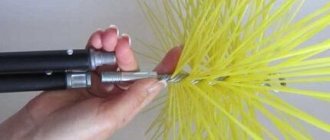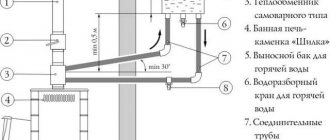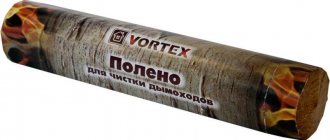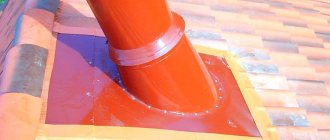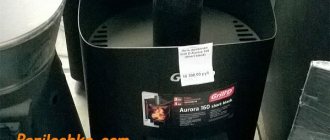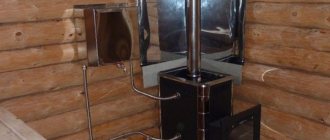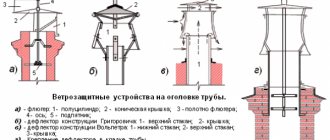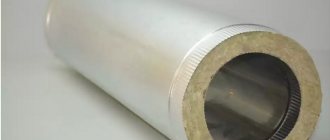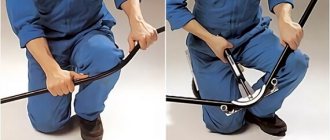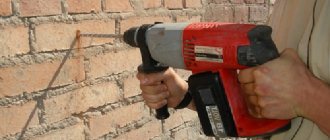- Soot formation
- Method one: cleaning with a brush
- Mechanical method
- Prevention
Often, when the oven is used incorrectly, clogging occurs, which precludes its further use for its intended purpose. Before you clean the pipe in the bathhouse, you should understand the causes of the problem. There are many effective cleaning methods, the choice of each of them depends on the desire of the owner and his financial capabilities.
Checking the technical condition of smoke ducts
First of all, you should definitely make sure that the pipeline is in good condition and intact. When it works intermittently, it is important to determine the reason for its incorrect functioning. The following steps are shown for this:
- visual inspection;
- use of special video systems;
- study of indirect signs that may indicate blockage.
Visual inspection
This is the simplest technique that does not require professional skills. It is enough to disassemble the pipeline and inspect the parts from the inside. If design features do not allow you to remove individual elements, you must take any lighting fixture and lower it into the stove from the roof or through special inspection holes (when provided). If there is a large amount of soot deposits, it will be noticeable even to a layman.
Special video systems
How and with what to clean the chimney pipe in a bathhouse from soot if you don’t want to dismantle the structure, climb onto the roof of the building and contaminate your clothes? You can call specialists with a video system to your home. This option is especially welcome if the stove is complex and has some defective areas. Procedure:
- the device is connected to the PC;
- a chamber with a light element is placed in the oven;
- specialists examine the surface from the inside along its entire length to identify blockages;
- Video recording is carried out, the file is subsequently reviewed, after which the information received is analyzed.
This method is expensive. However, it is important to remember that it is he who will allow us to assess the scale of the problem with one hundred percent probability.
Indirect signs
You can use them as a guide when diagnosing furnace problems:
- decrease in work efficiency - prolonged combustion of firewood;
- smoke entering the house through cracks;
- poor traction;
- presence of black smoke and soot flakes in the air;
- bad smell when lighting wood;
- sudden extinguishing of fire.
Slow kindling
Due to difficult ventilation, smoke quickly fills the entire volume of the chamber, so the firewood burns much more slowly than before. You should hurry to solve the problem, since this sign indicates that the furnace will soon fail.
Smoke comes in
If a smoke smell begins to enter the room through the damper, it is important to stop ignition and clean the stove as soon as possible. It is completely clogged and can no longer function.
Poor traction
You should definitely pay attention to the color of the flame. If all is well, it is bright and shoots upward. Otherwise, it fades and fluctuates in different directions. The draft can be checked using a lit match - bring it to the firebox and follow the flame (it should deviate inward).
Black smoke
It may indicate more than just blockage. Perhaps low-quality firewood was selected, and the solution to the problem will be to select a different fuel.
Soot flakes
The pipe is often clogged if soot flakes fly in the room where the stove is heating. If this problem is not solved in a timely manner, the chimney will become very clogged, and correcting the situation will require a lot of time and enormous labor costs.
Arbitrary flame extinction
Sometimes the fire can go out suddenly. If there is little or no draft, there is not enough oxygen in the firebox. It is strictly not recommended to leave the stove in this condition.
Unpleasant odor during heating
This is what carbon monoxide smells like when it is not being released due to a blockage. This situation requires immediate ventilation and stopping the heating of wood.
Why and how often should you clean your oven?
Smoke ducts must be cleaned before and after the heating season. Small stove structures, where the smoke channels run at an angle, will become clogged more often, so they are cleaned even in winter.
It is better if the chimney pipe runs vertically, without horizontal sections or many turns. Soot and various accumulations will immediately rise up through the pipe.
It is convenient to install cleaners in the form of tees at turns.
Timely cleaning of the chimney guarantees the safe operation of the stove and the entire fireplace structure, extending their service life, protecting residents from carbon monoxide poisoning and harmful substances that enter the air.
Metal chimneys, their operation and care
Such structures can be single-walled and insulated. The material is resistant to temperature changes, changes in atmospheric pressure, prevents the accumulation of condensation and maintains performance characteristics for a long time. The advantages also include:
- high level of security;
- ease of maintenance;
- durability.
Modern models, which can be found in the Ferrum catalog, are more advanced. They have a special internal enamel coating that protects against rapid clogging. However, all the advantages do not relieve the owners from the obligation to clean it regularly.
How not to clean a chimney
When cleaning, the following points should not occur:
- Open flap of the firebox, cleaning valves. Before the procedure, all holes are tightly closed, otherwise you will then have to wash all the walls and furniture from soot.
- In fireplaces and sauna stoves where there is no firebox door, the opening should be covered with a damp cloth.
- Hot oven during mechanical cleaning. According to fire safety guidelines, soot from the chimney should only be removed when the stove has cooled down.
- Wind, heavy rain, snow. Under such conditions, it is dangerous to climb onto the roof to remove soot from the chimney. It is easier to clean from the inside of the room.
Without experience, it is prohibited to disassemble wall and other parts of the chimney. Improper reassembly may cause a fire in the future.
Types of blockages and the need to clean the chimney in a bathhouse
If the oven is not used properly, it will clog. Some problems can be prevented in advance using a set of preventive measures, others are eliminated only when detected. What are the most common causes of clogs?
Soot formation
If the pipe in the attic has not been insulated, drops of moisture may be found on the surface. They absorb the products of wood combustion, after which soot is formed. Gradually, with use, this layer becomes thicker, and over time the stove becomes completely clogged.
Condensation accumulation
If damp wood was used during kindling, a lot of steam will be generated. It disrupts traction and promotes the rapid formation of soot deposits on the internal walls. For this reason, it is important to store wood in a warm, dry place with good ventilation.
Foreign objects getting inside
If the diameter of the smoke channels is large and there is no protective cap, there is a risk of foreign objects getting into it. At first, they do not affect the functioning of the chimney in any way, but over time, as they accumulate, the draft worsens and disappears.
Resin deposition
The type of wood used for kindling greatly influences the blockage. If coniferous wood is used, a lot of resin is produced during combustion; it sticks to the pipe from the inside. Under no circumstances should you burn plastic, plywood fragments, or chipboards. Plum, birch and other deciduous trees are the most suitable options.
Ash accumulation
Designs with many bends and transitions clog much faster than simple ones. If your house has a complex chimney with bent sections, it is recommended to install special hatches in places near the bends, through which it will be convenient to subsequently clean it, removing excess debris.
How to reduce chimney pollution?
It is common for different types of heating devices to accumulate soot in the smoke ducts at different rates. So, the more protrusions, roughnesses and irregularities, the more soot settles on the walls. Numerous turns or improperly laid smoke channels also prevent soot from escaping into the atmosphere.
But if the stove, fireplace, boiler are already installed, then there is no way to change its design. But you can minimize other negative factors that lead to severe contamination of the chimney.
Choosing the optimal fuel
When any fuel burns in a chimney, a deposit of soot and soot forms. But one type can form more deposits than others. The intensity of pollution can be reduced if you use the “right” fuel.
Wood from different tree species has different chemical composition. Different contents of resin, oils, tar, and creosote affect the degree of sediment formation on chimney pipes. The less these substances are in the wood, the less soot will be formed during the combustion process. Other types of solid fuels also contribute to pollution to varying degrees.
Which fuel produces soot more strongly than others:
- firewood from coniferous species - spruce, pine;
- birch firewood, which has a high tar content;
- Briquettes and pellets made from seed husks, due to their high oil content, produce intensive soot formation.
It should also be said that burning household waste, especially plastic, in a stove also contributes to the formation of plaque.
In contrast to these types of fuel, firewood from oak, hornbeam, beech, walnut, sycamore, pear, and apple can be noted. These hard rocks are much less likely to cause contamination of smoke ducts.
Briquettes made from sawdust, otherwise called Euro-firewood, burn well and leave a little soot behind. When burning, they do not spark, and weakly absorb moisture, so they can be stored in kitchens next to the stove.
Dependence on humidity and combustion temperature
It is highly advisable to use dry wood for heating premises - the drier the better. The fact is that when wet fuel is burned, the ash, under the influence of steam, rises with it and sticks together into lumps. It becomes heavier and cannot leave the chimney. As a result, it accumulates inside the chimney in the form of soot.
Therefore, they need to be prepared in advance and stored under a canopy, in special covered premises, sheds. In such conditions, it will be possible to achieve 15-20% humidity. In this case, the degree of dryness will always fluctuate depending on the air humidity indoors and outdoors.
The amount of soot formation is also affected by the combustion temperature. The worse the firewood burns, the greater the degree of contamination, the more often the chimney will have to be cleaned.
This is due to the fact that at low temperatures an excess of carbon particles is formed, which settles in the form of soot and soot. This phenomenon is especially typical for the initial combustion, when the wood is just starting to burn.
Therefore, when lighting a stove or fireplace, you need to strive to increase the temperature in the firebox as quickly as possible - heat the stove with dry wood, use more thin and dry wood chips.
In addition, after the fire dies out, it is necessary to maintain heat. To do this, as soon as all the fuel has burned out in the stove, close the gate. And then, during the next kindling, the temperature inside the stove will be much higher than if it had not been closed.
Methods for cleaning a chimney
There are many cleansing options. All methods can be divided into 3 large groups:
- mechanical;
- chemical;
- use of folk remedies.
The choice of one type or another depends on the financial capabilities and personal preferences of the owner of the building. They all have both advantages and disadvantages.
Mechanical method
For cleaning, you will need a brush whose diameter exceeds the dimensions of the furnace channels, a strong cable or flexible stick for convenient immersion of the brush, a weighting agent 2 times smaller than the width of the hole. This is the so-called work with a ruff.
Chemical method
How to clean a pipe in a bathhouse if it is clogged, but you don’t want to act mechanically? The chemical method is based on the process of burning certain compounds, leading to the elimination of blockages without damaging the material of the structure. There are many drugs and other agents that act in a similar way.
Kominichek
Used to prevent clogging. It operates on the principle of a catalytic effect - soot turns into carbon dioxide. Due to its properties, the drug eliminates the risk of deposits igniting.
Chimney sweep
If you regularly use the oven, it is recommended to use this preventative product at least 2 times a month. If you do not light the bath very often, you can use the Chimney Sweep once every 8-10 weeks.
Anti-carbon chemical composition
This is a special powder with a special composition that allows you to eliminate plaque located on the inner walls of the pipe. Average consumption: 200 g per 1 ton of firewood. However, these indicators may change up or down depending on the manufacturer.
Salt
If the stove is very clogged, this remedy will be ineffective. It is better to use it for preventive purposes. This method must be used at least once every 2 weeks, otherwise it will not bring results. Stages:
- light wood in the stove;
- throw a handful of table salt into the firebox;
- wait some time for a chemical reaction to occur that prevents the accumulation of soot.
Smoke box
The container contains a special composition. It is placed in the firebox during the process of lighting the wood. Over the course of 2-3 hours, the product acts on the blockage and removes it. The effect after using the box lasts up to 2 weeks, the next use is indicated after about 3 months. One of the main advantages is that “Smoke” does not smell.
Vortex
A wooden log has a mass of 750 g. With its help, you can remove all the deposits that have formed. It is necessary to place the log on the firewood during ignition and let it burn until the end.
POLESHKO-TE
Application procedure:
- light wood;
- place POLESHKO-TE there;
- maintain an interval of several hours;
- do not remove the resulting ash, since the product will be effective for another 1-2 uses of the oven.
SAGINET
Used for preventive purposes to prevent the formation of blockages. Advantages:
- removes soot;
- increases the heat transfer of firewood;
- increases cravings;
- valid for up to 2 weeks after use.
How to make your own cleaning brush
It’s easy to make a brush for mechanical pipe cleaning with your own hands. Many craftsmen use improvised means and even household waste for this. The simplest and most popular way to make a brush is from waste plastic bottles or an old broom with synthetic fibers.
We recommend that you read: Sound insulation methods to reduce noise in a sewer riser
If you use a bottle (1-3 pcs), you need to cut it in half, then make thin rods using scissors. The old broom needs to be disassembled by detaching the base from the nylon fibers.
To make a brush you will also need a cable, special clamps for fastening, two “ears”, a fixing pin and washers.
- The bristles of a broom or a cut bottle must be bent so that a flat round base is obtained.
- The pin needs to be connected to the “ear” and the washer, threaded through the broom hole and screwed on the second washer on the other side.
- Then a second “ear” is attached, which must be screwed very tightly so that the broom’s pile spreads almost horizontally in the shape of a circle.
- Using a clamp, the resulting brush is attached to the cable.
Important! The diameter of the brush must match the diameter of the chimney pipe. If the brush is smaller, then its bristles will not reach the walls, and if it is larger, then the nylon bristles will simply slide along the walls and not scrape off the soot.
Recommendations for the operation of stoves and chimneys
A few points that are important to know so that the structure lasts a long time and does not become clogged:
- It is best to use hardwood for kindling;
- do not add firewood one log at a time;
- do not burn garbage in the firebox;
- fire frequently, but little by little, with small stacks of firewood, and a new stack should be placed in the firebox after the previous one has burned out at least halfway;
- the logs must be completely dry;
- do not completely load the firebox with logs;
- prepare properly for cleaning - select the appropriate tool, use protective accessories, follow the instructions provided by the manufacturer;
- Cleaning the chimney pipe in a bathhouse from soot will not be difficult if you follow safety rules and follow the procedure according to all the rules.
Prevention
To avoid having to disassemble the entire structure and spend money on cleaning, it is necessary to take preventive measures. It is enough to use one of the products monthly to prevent blockages and the accumulation of a thick soot layer.
What weather is best to do it?
All manipulations should be performed only in warm, dry weather. There should be no wind.
How can you get rid of accumulated soot?
Sometimes, rather than hiring a non-professional, it’s much easier and safer to remove soot from your own bathhouse yourself - using brushes, modern chemicals for cleaning chimneys and even “old-fashioned” methods, and without necessarily climbing onto the roof!
Let's look at the most popular options for cleaning soot from a chimney and how to do it.
Using a special brush - a simple and proven method
Of all modern mechanical and chemical means, a brush is the simplest and safest
It is only important to choose one that is suitable for your chimney - both in diameter and in length, so that you do not worry about how to clean your chimney of soot along its entire height
Particularly good is a nylon brush with stiff bristles, which is easy to clean a chimney of any material. Nylon pile is flexible and adapts well to any pipe shape, while simultaneously coping with the most stubborn plaque. But at the same time it does not scratch or damage its inner surface.
The most difficult thing is to choose a good brush for chimney bends. This is where the soot settles, and it is not so easy to get it out. Nylon bristles are most suitable for this - they will easily penetrate into the most inaccessible places, while hard brushes will simply scratch the folded areas. And more scratches - less smoothness - more soot clings.
It is also important what kind of handle the brush has - it must be flexible enough so that it can fit into the most invisible nooks and crannies and at the same time be easy to control your movements
Potato peeling - the old-fashioned method
Here's how to clean a chimney in this way: throw a bucket or half a bucket of fresh potato peelings into a well-heated stove - that's how much will fit into it. During their burning, starch will be released, and it decomposes the soot. Within two to three days it will almost completely fall off the walls of the chimney and partially fall out. After this, tie a brush made of twigs to the brick and clean the top of the chimney in the classic way - it will be easy!
Aspen wood - with fire from the chimney
Cleaning a chimney with aspen wood is as old as the hills. But this method cannot be called safe - let's figure it out.
We put aspen wood in the stove and light it well. They burn well and produce a very high temperature. At this time, all doors and valves of the stove should be open, and do not forget to add more firewood. The result is that the soot itself lights up and the stove begins to make a loud noise. If you go outside at this moment, you will see fire pouring from the chimney on the roof of your bathhouse! And the surrounding area will quickly become covered with large white flakes. But the chimney will be cleaned, and cleaned well. If only it can withstand this test - after all, not every chimney is designed for 1100 ° C, and it is at this mark that soot will burn in it.
Aluminum cans - unusual, but effective
The cans need to be burned once in ten fires - this is enough, and very little soot will be collected. The only condition: the fire must be made hot, with a large amount of hard coal - so that the cans actually burn, and do not lie on the wood and change color. Normally, one can should burn out in five minutes.
Hose - whatever is at hand
Some bathhouse attendants don’t bother themselves much with newfangled methods and clean the chimney with a regular watering hose. The whole procedure looks like this:
- Remove the glass from the bottom of the chimney.
- We insert a hose from below (preferably from above), preferably a hard one.
- A few cleaning movements - all the soot is already at the bottom.
You can additionally attach a chopped bottle or brush to the end of the same hose - and you will see how easy it is to clean the chimney effectively and cost-effectively!
Chemical cleaning is unpopular and unpleasant
Chemical cleaning of chimneys is more of a preventative measure than a real cleaning. The bottom line is that after this the soot will fall off in places, but you will still have to use an additional brush. Plus, the smell in the bathhouse can last for several days. Therefore, if potato peelings are not available to you, you can buy some “Komichek” or “Log-chimney sweeper”.
